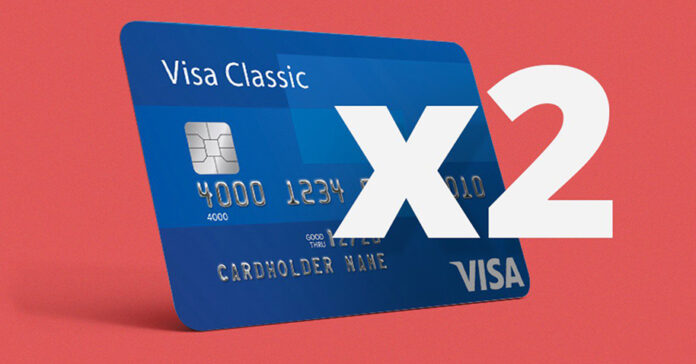Banks promise offers like cash-back, bonus miles or cash bonuses to get you to sign up and spend, and it’s rewards like these that you can use to maximize your credit card experience and take advantage of all the structure that credit card networks and banks provide.
Ultimately though, someone is paying for all these credit card rewards. In order to get customers to sign up and spend on their cards, banks offer bigger and better rewards. As banks have expanded rewards, more people have started using rewards cards. In 2018, over 92% of all credit card purchases were made with rewards cards according to the Wall Street Journal.
But it’s not the banks that ultimately pay for these rewards. When a customer uses their credit cards to buy something, the store or online merchant gets charged something called the interchange fee, and that fee is a percentage of the total sale. It’s important to understand that it’s the bank that issued the credit card that collects the interchange fee, and it’s this money that they rely on to buy cardholder rewards. It could perhaps be the topic of a new post, but they buy miles from airlines with this money.
Banks also make money on your annual fee and interest on late payments, but it’s the interchange fee that composes the majority of the budget to provide rewards, especially with premium credit cards. Interchange fees aren’t the same across all credit cards. Cards with low rewards have an interchange of about 1.5% of the purchase price, while cards with big rewards can have an interchange fee of nearly 3%.
VISA and MASTERCARD have a pricing table with over 15 pricing points to accommodate all types of credit cards. From domestic to international, from presential to online purchases, from pinless to keyed transactions. From corporate to personal. I’ve written previously that for online sellers accepting international credit cards on their websites, it can get even more expensive. You can read it here.
The divide between these two types of cards has increased, banks can make up to 25 cents more per average purchase if the customer uses a premium rewards card over a basic one. In 2017, retailers paid issuers $43.4 billion in interchange fees. So, as you can imagine, stores are not huge fans of these credit card rewards.
Most stores don’t have negotiating power over these interchange fees, payment networks like VISA and MASTERCARD require them to honor all cards, which means that they have to accept both low fee and high fee credit cards. Some stores pass these charges on to the end customer by increasing prices to offset the cost of accepting high fee credit cards, businesses that opt not to do so take a hit on their profit margins.
If you’d like to learn how to maximize the acceptance of internationally issued credit cards for your e-commerce business, I would be happy to explain how regionalizing payments helps increase revenues and lower fraud. You can send me a message on LinkedIn for further inquiries.












